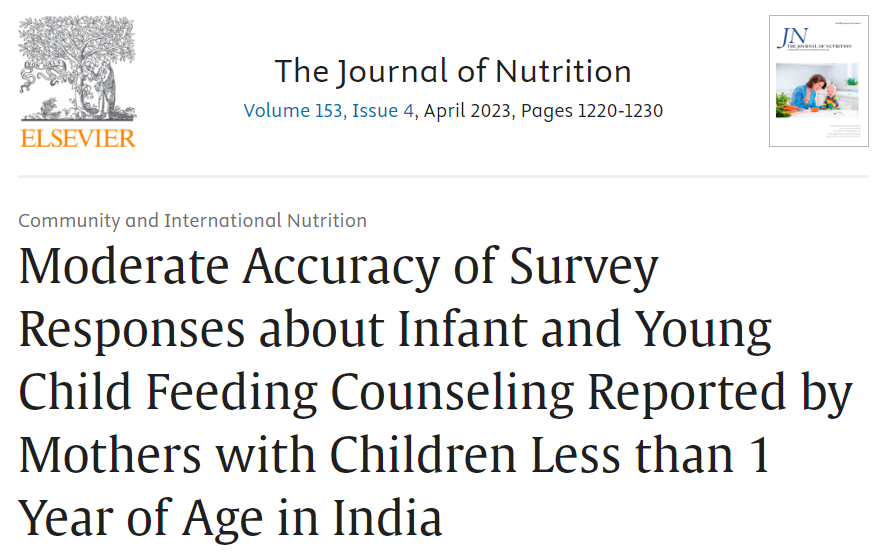Journal Article | https://www.sciencedirect.com/science/article/pii/S0022316623110996.
Publication Date | April 2023
Abstract
Background
Counseling on infant and young child feeding (IYCF) to support optimal breastfeeding and complementary feeding practices is an essential intervention, and accurate coverage data is needed to identify gaps and monitor progress. However, coverage information captured during household surveys has not yet been validated.
Objectives
We examined the validity of maternal reports of IYCF counseling received during community-based contacts and factors associated with reporting accuracy.
Methods
Direct observations of home visits conducted by community workers in 40 villages in Bihar, India served as the “gold standard” to maternal reports of IYCF counseling received during 2-wk follow-up surveys (n = 444 mothers with children less than 1 y of age, interviews matched to direct observations). Individual-level validity was assessed by calculating sensitivity, specificity, and AUC. Population-level bias was measured using the inflation factor (IF). Multivariable regression models were used to examine factors associated with response accuracy.
Results
Prevalence of IYCF counseling during home visits was very high (90.1%). Maternal report of any IYCF counseling received in the past 2 wk was moderate (AUC: 0.60; 95% CI: 0.52, 0.67), and population bias was low (IF = 0.90). However, the recall of specific counseling messages varied. Maternal report of any breastfeeding, exclusive breastfeeding, and dietary diversity messages had moderate validity (AUC > 0.60), but other child feeding messages had low individual validity. Child age, maternal age, maternal education, mental stress, and social desirability were associated with reporting accuracy of multiple indicators.
Conclusions
Validity of IYCF counseling coverage was moderate for several key indicators. IYCF counseling is an information-based intervention that may be received from various sources, and it may be challenging to achieve higher reporting accuracy over a longer recall period. We consider the modest validity results as positive and suggest that these coverage indicators may be useful for measuring coverage and tracking progress over time.

